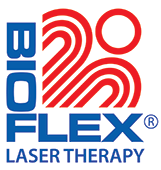The technology utilises superluminous and laser diodes to irradiate diseased or traumatized tissue with photons. These particles of energy are selectively absorbed by the cell membrane and intracellular molecules, resulting in the initiation of a cascade of complex physiological reactions, leading to the restoration of normal cell structure and function.
In the short term, the body produces and releases beta-endorphins to control the sensation of pain. Cortisol production is also increased to combat the stress associated with the disease process or traumatic incident.
Over the long term, ATP (adenosine triphosphate) production is increased resulting in improved cellular metabolism. DNA (deoxyribonucleicacid) production, the protein building block of tissue, is substantially increased. Neurotransmission is facilitated secondary to elevated levels of serotonin and aceytylcholine. Mitochondrial activity is stimulated resulting in cell replication or regeneration of abnormal cells.
The process results in the elimination of symptoms, including pain, and enhances the body’s immune system response, facilitating natural healing.

